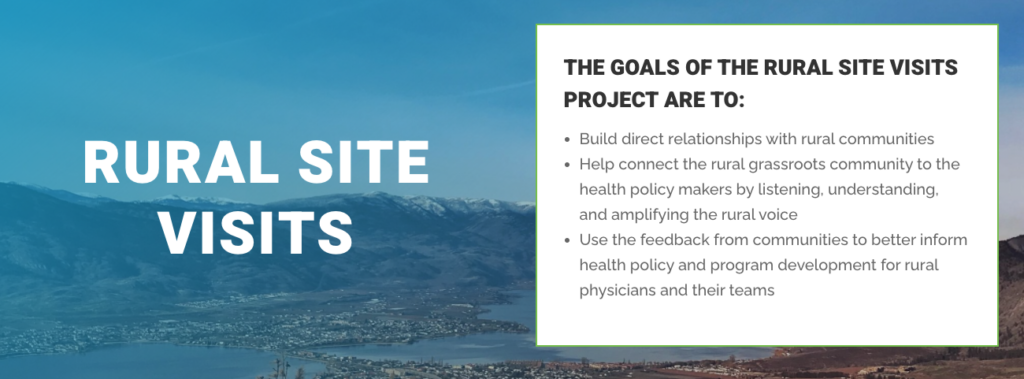
How can rural community-engaged health services planning affect sustainable health care system changes?
How can rural community-engaged health services planning affect sustainable health care system changes? That’s the question posed in a “pre-print” process description and qualitative analysis of data from the Rural Coordination Centre of British Columbia’s Rural Site Visits Project (SV Project), authored by C. Stuart Johnston, Rural Co-ordination Centre of BC (RCCBC), RCCBC’s Erika Belanger and Krystal Wong, as well as David Snadden, University of British Columbia Faculty of Medicine, Northern Medical Program.
What is a “pre-print”?
It’s a fairly recent development in academic publishing. A pre-print is the version its author(s) have submitted to a scholarly journal, before the submission has undergone peer review. This pre-print is a preview of the article — which means the research results are not yet validated by peer review. Any final published version, if accepted, will probably look different. In this particular case, the journal the authors have submitted it to encourages pre-prints, especially during the pandemic, as reviews are taking a long time. If the article is accepted, the accepted version with any revisions will be substituted for the pre-print on the pre-print site, but the document identifier (DOI) stays the same for any final article.
The objectives of the Rural Site Visit Project (SV Project) were to develop a successful model for engaging 201 communities in rural British Columbia, build relationships, gather data about community health care issues to help modify existing rural health care programs, and inform government rural health care policy.
An adapted version of Boelen’s health partnership model was used to identify each community’s health care partners: health providers, academics, policy makers, health managers, and community representatives. Qualitative data was gathered using a semi-structured interview guide. Major themes were identified through content analysis, and this information was fed back to the government and interviewees in reports every six months.
The 107 communities visited to-date have health care services that range from hospitals with surgical programs to remote communities with no medical services at all. The majority have access to local primary care. Participants were recruited from the health care partner groups identified above using purposeful and snowball sampling.
A successful process was developed to engage rural communities in identifying their health care priorities, while simultaneously building and strengthening relationships. The qualitative data was analyzed from 185 meetings in 80 communities and shared with policy makers at governmental and community levels.
The 36 themes that were identified, with three overarching themes interconnecting all the interviews — Relationships, Autonomy, and Change Over Time — are discussed in the pre-print.
The SV Project appears to be unique in that it is physician-led, prioritizes relationships, engages all of the health care partners singly and jointly in each community, is ongoing, provides feedback to both policy makers and all interviewees on a bi-annual basis and, by virtue of its large scope, has the ability to produce interim reports that have helped support system change.
Click here to access the pre-print.
